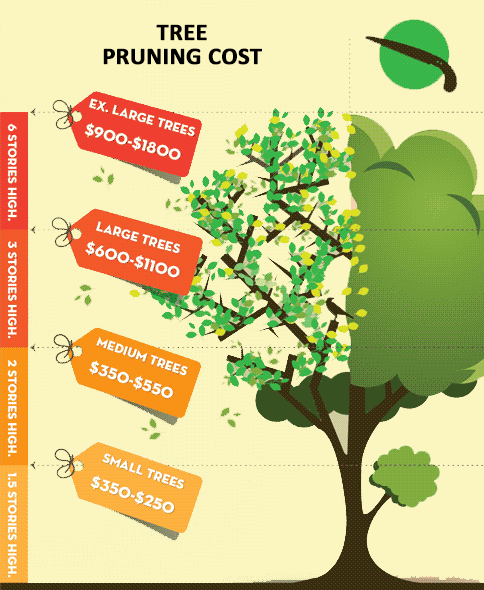When it involves developing a landscape that grows, mastering the art of tree trimming is a must. Picture having the ability to shape your trees with accuracy, ensuring their vigor and charm for years ahead. By finding out the necessary techniques for appropriate cuts, timing, and architectural training, you hold the trick to a flourishing outdoor space that will certainly thrill all who experience it. Yet exactly how do read this article trimming methods genuinely impact the health and wellness of your trees and the total landscape visual?
Proper Pruning Cuts for Tree Wellness
When it comes to maintaining the wellness of your trees, making proper pruning cuts is vital. Inaccurate cuts can bring about condition, insect infestation, and general tree decline. To make sure the vigor of your trees, constantly begin by utilizing sharp, clean devices to make accurate cuts.
Begin by identifying the branch collar, a swollen area where the branch affixes to the trunk. Cutting simply outside the collar helps advertise correct recovery and lowers the threat of infection. Stay clear of leaving stubs as they can welcome bugs and illness right into the tree.
Bear in mind to make cuts at a mild angle, sloping away from the trunk, to prevent water from pooling on the wound. Furthermore, eliminate any dead, damaged, or crossing branches to boost air flow and sunshine penetration.
Timing and Frequency of Trimming
To keep the health and framework of your trees, comprehending the optimum timing and frequency of trimming is essential.
The very best time to prune trees is typically throughout the inactive season in late wintertime or early springtime. Pruning during this duration aids advertise new growth once the tree starts budding in the springtime.
Nonetheless, some trees, like spring-flowering ones, are best pruned right after they complete blooming to stay clear of cutting off following year's blossom buds.
Regular pruning is vital, yet the frequency depends on the tree types and its growth price. For most trees, an annual inspection to remove dead, diseased, or going across branches is recommended. Youthful trees may need even more regular pruning to develop a strong structure, while fully grown trees may only need maintenance trimming every couple of years.
Prevent trimming throughout the fall when diseases are a lot more conveniently spread, and avoid heavy trimming during the summertime when the tree is actively growing.
Educating Young Trees for Framework
For establishing solid and healthy and balanced trees, training young trees for optimal structure is necessary. By shaping a tree when it's young, you set the structure for a tough and aesthetically appealing mature tree.
Begin by determining the central leader, which is the main upward-growing branch. Motivate the main leader's growth by pruning away contending leaders, aiding the tree establish a solid main trunk. Additionally, get rid of any branches that grow internal or downward, as they can trigger structural concerns as the tree grows.
It's important to room out lateral branches equally around the trunk to promote well balanced growth. As the tree grows, remain to monitor its growth and trim as required to keep its shape and framework.
Appropriately educated young trees are less likely to develop weak crotches or overcrowded branches, decreasing the threat of damages throughout storms. Spending time in training young trees will pay off with a beautifully structured and resistant tree in the future.
Final thought
Now that you have actually mastered the essential techniques of tree trimming, your landscape gets on its method to flourishing. By using sharp devices, making precise cuts, and appropriately timing your pruning sessions, you are making certain the health and long life of your trees. Bear in mind to consistently check and keep your trees to keep them thriving. With your newfound understanding, your landscape will continue to expand perfectly for years to find. Maintain find out this here !
